How Old Is My Roof? 10 Simple Ways to Determine the Age of Your Roof
One of the most vital components of a home is the roof that protects it. The older a roof becomes, the more it suffers wear and tear from sun, rain, hail, sleet, ice, scorching heat, frigid cold and airborne debris. The lifespan of a roof can vary depending on a variety of factors, but it’s important to know the age of the roof and even more important to know the condition it is in.
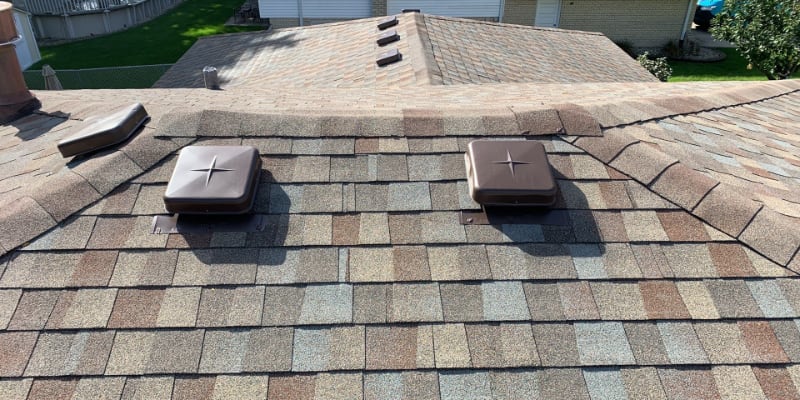
If you’re like many homeowners, you’ve probably asked yourself, “how old is my roof?” But don’t worry – with a few helpful tips, you will know how to determine the age of your roof – and yes, it is important, especially for those who are selling or buying a house but also for homeowners who just want to be proactive and do what they can to protect their home.
The following is a guide that will walk you through all the steps to determine the age of your roof. The methods we share here have helped many to know what to look for to determine the age of their roof and make an informed decision about when it could require repairs or replacement.
Table of contents:
- WHY DO YOU NEED TO KNOW THE AGE OF YOUR ROOF?

- HOW TO FIND OUT HOW OLD YOUR ROOF IS?

- 10 WAYS TO DETERMINE THE AGE OF YOUR ROOF

- WHEN SHOULD YOU REPLACE A ROOF

- COMMON VISIBLE SIGNS OF AN AGING ASPHALT SHINGLE ROOF

- WHAT TO DO IF YOU CAN’T FIND OUT WHEN YOUR ROOF WAS LAST REPLACED?

- GET A ROOF INSPECTION FROM EXPERIENCED ROOFERS IN DUPAGE COUNTY

Why do you need to know the age of your roof?
If you’re currently invested in Google searches with questions like, “how can I find out how old my roof is?” you’ve got a lot in common with many who know the importance of coming to an accurate answer. Like it or not, every roof will at some point require replacement, as the lifespan of roofing material is limited to around two decades or less for 3-tab shingles under normal conditions.
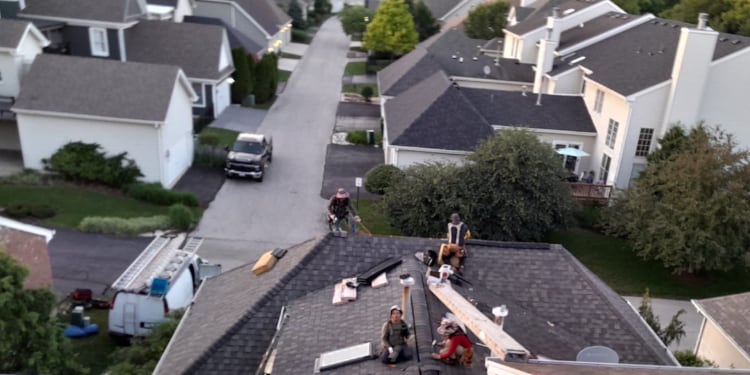
So, why does the age of the roof matter? The answer will vary depending on your situation. For example, if you’re selling a house, potential buyers will most certainly inquire about the age of the roof and won’t take “I don’t know” for an answer. The age of the roof has a big impact on its value. Also, if your roof is old and coming to the end of its life, the sooner it will begin to leak and cause structural damage, which can lead to expensive work, and not just on the roof, but throughout the home.
Another reason it is important to know the age of your roof is that the answer might come from a professional who inspects roofs for a living. This means minor problems could be lurking that can be repaired for a very low price. When these minor problems are ignored, they only get worse, which means what could have been a simple repair will eventually turn into a full roof replacement.
See the following list of reasons for why it is important to know the age of your roof:
Identify roof replacement and maintenance needs
At some point, all roofs will need some sort of maintenance, whether it’s a cleaning or minor repair. When the age of the roof is determined, so too can the maintenance needs. But other factors come into play, such as severe weather that has swept through your area over the years and impacted the overall condition of the roof.
There will also come a time when undergoing extensive maintenance would be less beneficial than taking on a complete roof replacement. This is the case with older roofs where ongoing maintenance and repairs simply become too frequent and costly and it just makes sense to have it replaced.
Insurance impact
Given the cost of roof replacement, insurance companies keep a close eye on how a roof is covered and what premiums are paid. This is why they will require homeowners to have an inspection completed on older roofs. The results of the inspection can influence what the insurance company will cover and what premiums they will require the homeowner to pay. Should the roof be in really bad shape, the insurance company can deny coverage, which is one of the top reasons why you need to know the age and condition of your roof.
When a roof is new and in peak condition, it’s less likely to incur damage, particularly in weather-related situations. And for this reason, when you have a new roof installed, your insurance company could offer reduced rates. Furthermore, insurance companies can also prorate coverage based on your roof’s age, which is another reason it pays to know the age of your roof.
Weather-related concerns
Weather conditions, exposure to sunlight and fluctuating temperatures have the biggest impact on a roof’s lifespan. Midwestern hailstorms, extreme heat, frigid cold and all the rain, snow and sleet that come with these severe weather events will age a roof. The more years a roof has exposure to these elements, the more it will wear down.
As the roof ages, there are steps that can be taken to reinforce it and treat various issues as they arise. Knowing the age of the roof will help inform which measures can be taken to provide protection, perhaps even adding structural components, insulation and other materials to protect the home.
Roofing contractor guidance
When you know the age of your roof, you can relay that information to your roofing contractor who will almost immediately know what stresses it has undergone and what they can do to remedy various problems. They will know where to look, as they will have had experience with roofs of the same age, and address the most common issues.
The more information you can provide your contractor about your roof, the more prepared they will be to proactively mitigate problems and prevent them from becoming big issues down the line. This can save you a lot of headaches later. But most importantly, your roofing contractor will have the information they need to provide services that will better protect your home.
Home’s resale value
While the most important job a roof has is to protect the home, knowing the age of your roof can also impact the resale value of the home. One of the first questions potential home buyers ask is, “how old is the roof?” An older roof offers less protection and many potential problems, and nobody really wants to take on a reroofing project soon after acquiring a home.
When a potential buyer learns that a replacement will not be in their near future, they see more value in the home and are more likely to offer asking price, or depending on the housing market in your area, could end up in a bidding war with other potential buyers. Simply knowing the age of your roof and taking the necessary steps to address any necessary issues (repairs) can make your home more attractive to buyers.
How to find out how old your roof is
If you’re wondering how to find out when your roof was replaced, you’re like many homeowners who have not been informed about the last time the roof was worked on. Whether you’re putting the home on the market or just looking for guidance on what potential maintenance should be carried out to keep your roof in top condition, establishing its age will be a huge benefit to you.
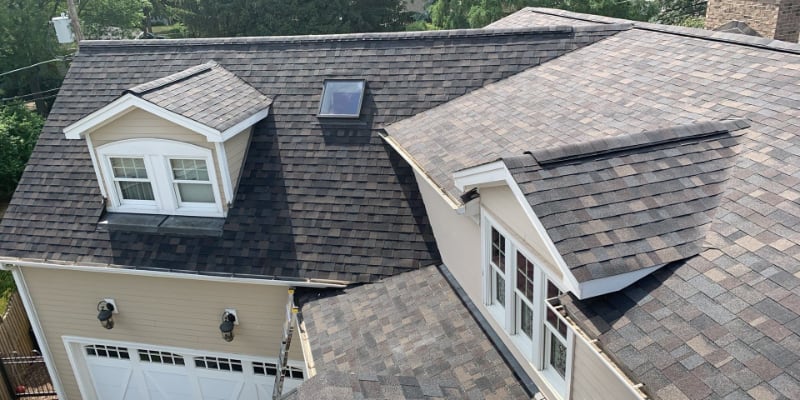
So, how to find out how old your roof is will take some research and investigating, but these are necessary steps toward protecting your home and your interests, and could also impact your insurance coverage. Most homeowners know that understanding the age of their roof is crucial for a variety of reasons, practical and financial.
First and foremost, the age of your roof guides its maintenance needs. This will take into account the type of roofing material used, too, as thicker materials made by quality manufacturers will generally last longer than budget materials.
Homeowners also like to plan into the future, especially on the bigger ticket items like reroofing projects, and knowing the age of the roof is crucial in that planning process. In the following sections, we’ll dive deeper into the ways in which you can find out how old your roof is.
10 ways to determine the age of your roof
The quest to determine the age of your roof can be difficult if you're not the original owner or have not been involved in a reroofing project previously. But when you determine the age of your roof, you will have a better idea of its status in terms of overall safety and ability to hold up to severe weather.
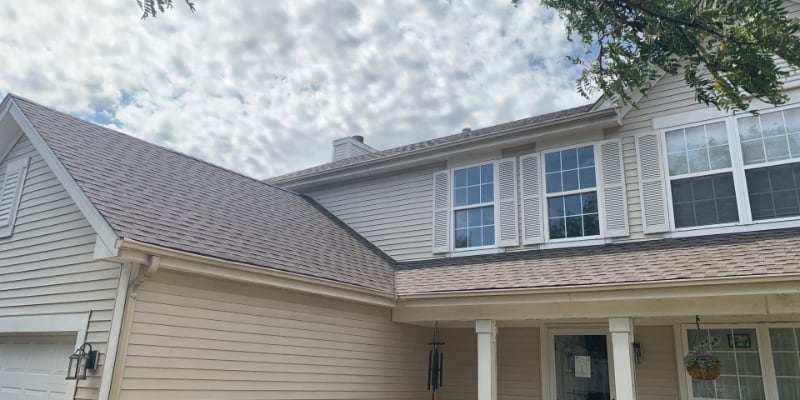
To help you get to that elusive age of your roof, we’ve established the top 10 ways homeowners can accurately make that assessment. Some of these items might take some investigating, but it’s well worth the effort.
Check the building permit
When you purchase a home, it comes with a lot of documentation. From the deed and tax information to closing disclosures to various affidavits and, hopefully, the building permit. Look through all your records and see if the permit is included, as it will provide a date or dates when significant work was done to the home.
Also, check with your county for building permit records related to your home, as roofing work will require the homeowner or contractor to pull a permit prior to doing such work. The documentation will include the date the permit was issued and there could also be documentation related to inspections upon completion of the work, which is also a requirement in most counties.
Building permit records will include all the dates for each action, but they might also provide insights into the quality of the reroofing or repairs, but at the very least will include the scope of the project. This means you will have knowledge of the dates of the work, as well as the extent of it – from repairs large enough to require a permit to a full-on replacement.
In the hands of a roofing contractor, this type of information is invaluable and will help them to more accurately tend to your roofing needs, as well as provide advice about steps to take in the future that will help you maintain your roof and protect your home.
Examine roofing warranty documents
Warranty information related to your roofing materials and/or workmanship is another document that you should look for, as it will have the install date on it. Quality roofing material manufacturers commonly offer warranties, and roofing contractors who hold themselves accountable also offer a warranty on their work. These documents will provide insights into the age of the roof.
Should the documentation not exist, you have another option. Look for information on the shingles themselves, such as model and type, and relay that information to the manufacturer. They can provide details about the shingles, such as the years those specific types were made available, and you can get a better idea of the age of them and when they might have been installed.
Once you know the approximate age of the roof and you have informed your roofing contractor, they can make an assessment through their inspection of the roofing system that will tell you whether the roof is showing wear that is typical or atypical for a roof that age.
Seek historical aerial photographs or satellite imagery of your property
It’s not exactly common, but in some cases, it is useful to research aerial photography related to your home. Satellite imagery that goes back several years to decades, can offer insights about your roof. If the color of the roof changed between one set of photos and the next, that’s an indication that the roof had been replaced at some point between the time those photos were taken.
While satellite imagery could be a trusted source, you can also research local archives, online databases and inquire of government agencies about their visual archives. Also, check with your local historical societies about their records related to aerial imagery.
Ask the previous owner or real estate agent
Some homeowners have an exceedingly tough time due to the fact that there seems to be no paper trail leading to identifying when work was done to the home. Without documentation, the course of action has to be contacting someone with involvement in the history of the house.
One of the best resources would be the previous owner – especially one who lived there for a long time. If you have their contact information, reach out and inquire about the roof and if they ever had it replaced. Most people are open to questions like these and might even enjoy talking about their previous home, as they likely made many memories there.
One hiccup many people will run into with contacting the previous owner is that they simply cannot find their contact information. If this is the case with your home and previous owner, reach out to the real estate company that handled the sale. Their records should include the information and allow them to act as the third party and communicate your desire to get more information about the roof. This is considered by some to be a more professional method.
In a perfect scenario, you’ll get plenty of information from the previous owner or real estate agent and make an informed decision about what to do next. But in the worst-case scenario, when you’ve exhausted all options and you still don’t have the information about the age of your roof, there are other methods you can use.
Analyze your neighbors roofs
Rarely will there be homes in a neighborhood that were built decades apart. Rather, many homes within the same division are built around the same time, and therefore have the same style and age of roof. Even if the shingles vary in color, they are usually around the same age.
Have you noticed more roofing companies doing work in your neighborhood? This could be because the homes were built around the same time, and because asphalt roofing products have a specific lifespan, it makes sense that they are all suffering some degree of degradation and are in need of repair or replacement.
There are circumstances that will cause a deviation from this norm, such as a roof that took the brunt of a storm and was damaged more so than surrounding roofs and needed to be replaced. House fires and falling tree limbs can also create situations where one or more roofs in the surrounding area will be newer than others.
But in a situation where 3-tab shingles were the product of choice for a home construction company, the average lifespan for these shingles is around 15 years in normal conditions. For thicker and longer-lasting shingles, the builder might have chosen the architectural style shingles, which last around 25 years.
Take a closer look at your neighbors’ roofs and compare what you see with your roof. Talk to your neighbors about granules in their downspouts and if they are consistent with what you see in yours, because these protective outer layers on shingles shed over time and can indicate an aging roof.
Find the previous roof replacement company and request a receipt
Roofing companies often keep detailed records and can assist you in getting information about your roof’s age. If the previous owners and real estate agent can’t recall a date of the reroofing, but remember the name of the contractor, you can request the information directly from the contractor. Many roofing contractors offer a workmanship warranty, which is why they will know exactly when the work took place.
If you can’t get information about which roofing contractor reroofed your home, your next option is to make a list of local contractors and contact them one by one to see if they did the work. It’s not the most desirable method of getting the information you need, but when all else fails, this could be the method that allows you to move forward with your project.
Look for manufacturer’s information on shingles
Taking a more investigative approach, obtaining information from the shingles themselves could unlock all the clues about the age of your roof. Unfortunately, the manufacturer’s information is printed on the underside of the shingles, which means you will need to carefully lift a shingle section without damaging it or surrounding shingles and gather the information.
The data provided on the back of shingles will vary depending on the manufacturer. It’s not standard practice for them to stamp or print the date of production or a manufacturing code on every single shingle, which means you might have to inspect more than one area. Also, the information on the shingle could be related to the manufacturing process rather than provide information about dates. Furthermore, a code on the shingle could be used over the span of several years, which could also provide a less-than-precise estimation of the age of your shingles.
Having a conversation with the manufacturers’ customer service could be helpful, as they will be able to walk you through the meaning of the various codes on your shingles.
Check for visible signs of roof aging
As shingles age, they will begin to show specific signs of wear, such as warping, cracking and discoloration. Take a close look at yours and be sure to check on all sections of the roof and look for any sign of degradation. Do you see a difference in the texture of the outer layer of granules? Do you notice any balding or surface undulations? These are all signs of an aging roof.
Another sign that your shingles are old is the presence of organic growth. Many shingles manufacturers make their products with ingredients that prohibit the growth of mold and algae. But as they get older and lose this ability, you will notice everything from moss to mildew, and perhaps black streaks or stains. This means moisture is becoming an issue and that your shingles are probably due for replacement.
Check the attic for potential clues
Even when everything looks fine from the outside, there could be signs on the inside of your home that your roof is no longer protecting like it once did and has begun to fail. The perfect place to look for this is in your attic. Grab your flashlight out and head up to your attic, whether it’s a large, fully functional space or simply a crawlspace, and look for telltale signs of roof problems, which will most likely present as moisture damage.
If your roof is having problems, you’ll see anything from sagging sections to dark streaks, stains and perhaps even evidence of active moisture. It’s often the case that if the attic is showing signs of moisture, it could be getting into your interior walls, going unnoticed until the damage is done and extensive and expensive repairs are required.
In the absence of such deterioration, there could be clues left behind by roofers that can point to the age of your roof, such as extra, unused shingles with original packaging and documentation.
Ask for an assessment from a local roofing contractor
You’ve exhausted all available options and you are no closer to determining the age of your roof than when you started, so what’s now? Calling in an expert – someone who has years of experience and knows exactly what to look for – is the next step.
It’s important to note that even though a local roofing contractor has many tools they can use to assess the quality of a roof, there is no guarantee that they can pinpoint the date it was installed. Rather, they can offer an approximation. But they can also investigate specific areas that might need attention and provide a recommendation about the overall “health” of the roofing system.
While having the exact date information is of value, so too is knowing the condition of your roof. Inspectors charge a fee for their services, and while this is not the preferred method for homeowners who would rather not spend money, when ascertaining the age of the roof is not possible through free means, at least you know that paying for these services will yield far more than simply the age of the roof.
When the roofing contractor has completed their inspection, you will know how to plan for the future. In some cases, the roof could have 10 or more years of service in it, which offers plenty of time to put aside funds for the reroofing project. Or, you can begin making arrangements for more immediate needs, whether it’s minor repairs or a complete replacement.
The path to learning the age of your roof might be an uphill climb, or you could be one of the fortunate ones and find out easily. Whatever the effort, knowledge is power. From checking in with the previous homeowner or realtor, comparing your roof to others in your neighborhood, contacting local roofing contractors or ordering a professional inspection, the more you know, the better prepared you will be to start your roofing project on the right foot.
When should you replace a roof
For those wondering, “how do I know if I need a new roof?” You should be aware that there are a variety of ways to make this determination, and it’s important because your roof protects your home and everything in it. The first approach for most homeowners is to figure out how old their roof is, as asphalt shingle roofs have a finite lifespan and the closer you are to the end of it, the more prepared you must be to take on a reroofing project.
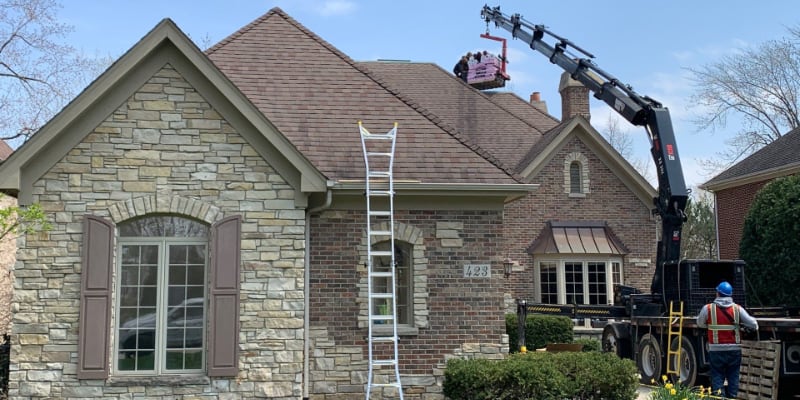
Homeowners who take a proactive approach will ask, “how do I know if I need a new roof,” and do all the research necessary. Most will begin looking at the condition of the roof, perhaps noticing curled edges on the shingles or perhaps cracked or missing shingles. Others will not see any outward signs of problems, but notice moisture stains in the attic. These are definite signs that the roof is failing and should be replaced.
Common visible signs of an aging asphalt shingle roof
A roof inspection from the ground is not a thorough assessment of the condition of your roof, but there are telltale signs that are visible from a distance, including the following.
Moss or algae on the roof
Roofs are designed to shed water, but when that fails to occur, vegetation can take root. Most organic growth on roofs is related to moss, algae, mold and mildew, which will usually be visible from the ground or if the moisture has penetrated through, it might also be seen in the attic in the form of mold.
Organic growth can also present itself as black streaks. If you notice this on your roof, it doesn’t automatically mean your roof needs to be replaced. In some cases, treating it with special chemicals can remedy the situation. Always call in a contractor when you notice any type of growth and they will have a solution for you.
Curling roof shingles
Old and worn-out asphalt shingles can curl. This will happen sooner in roofs that have been subjected to higher-than-normal abuse, mostly from Mother Nature. With lower-quality asphalt shingles, curling could begin in as little as 10 years, but by age 15, most shingles will begin to show some signs of aging.
So, what’s the problem with curling shingles? Aside from the decreased aesthetic appeal, a curling shingle is structurally unsound, as it will allow moisture to penetrate into areas where it shouldn’t be. There are also increased energy costs associated with roofs with curling shingles.
Missing or damaged roof shingles
One of the more common reasons for roof shingles to become dislodged is aging, because as they age they become brittle and lose their adhesive qualities. Another reason is impact damage. Whether it’s falling branches or debris that gets airborne and crashes into your shingles, the repeated impact can cause them to detach or be severely damaged.
Damaged and/or missing shingles deserve immediate attention, as this is a clear indication that your home is at risk of severe damage due to moisture. In some cases, this might include only repairing a small section of the roof, but in others where it’s more age related than acute impact damage, it could be a sign that roof replacement is imminent.
Damaged or rusted flashing
Flashing serves many functions, but primarily is a waterproofing material that prevents water from causing damage to the interior of the home. Roofing installation experts use flashing in many different areas of the roof, including around vent pipes, in roof valleys, around chimneys, skylights and other features. When the flashing becomes damaged, it fails to keep water from penetrating these areas.
If the roof is really old, it might predate codes that require flashing in various areas. Furthermore, in areas where the flashing is present on an older home, it could be rusted, damaged or out of place. While the lack of waterproofing that intact flashing provides is important, it is also used to help maintain energy efficiency, which is another reason it should be replaced if it is old or damaged.
Damaged roof valleys
Roof valleys are just as they sound – an area where two downward-sloping angles meet. Water drains at a high volume here, which is why roofers will reinforce this area, but it can still be susceptible to damage. On new roofs the valleys function normally, which means they direct water to the gutters, which will carry it to the downspouts and away from the home.
As a roof ages, various problems with the valleys, including flashing damage, can cause debris to build up. This buildup will trap moisture, blocking it from exiting the roof. This buildup of debris and water can lead to pooling that damages the roof.
Rusted or clearly visible nails
Properly installed shingles will not reveal roofing nails, as they should be hidden under the properly overlaid shingles. However, when shingles become aged and worn by years of exposure to the elements, shingles can lift and reveal nails. A lifted shingle that allows moisture to come in contact with the nails will result in rusted nails. If you can see roofing nails, it’s a sign that a professional roofing contractor should be called in to assess the situation.
From organic growth to missing or damaged shingles, rusted flashing to visible roofing nails, there are many signs that point to an aging roof that needs to be inspected and a plan made for its repair or replacement.
What to do if you can’t find out when your roof was last replaced?
When you’ve looked into how to find out when your roof was replaced and have had zero luck getting an answer, your only option is to bring in an expert. Roofing professionals have so much experience inspecting, repairing and replacing roofs that they have a unique ability to estimate the age of roofs of all types. They know where to look and what to look for to make an accurate determination.
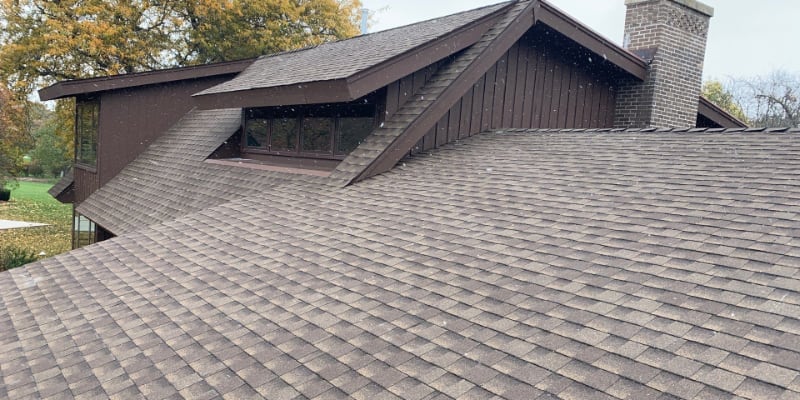
The age of the roof is important, but as your inspector makes a thorough assessment of yours, they will pinpoint various issues that might need immediate attention, which is another reason bringing in a professional has advantages. In fact, making an inspection part of your regular roofing maintenance can be one of the most proactive things you can do to keep your roof in the best shape possible and last a really long time.
Get a roof inspection from experienced roofers in DuPage County
DuPage County homeowners want to safeguard their roofs and they know to do that, they need local roofing professionals to assist them. At VIS Exterior, our goal is to be the go-to roofing contractor by providing extremely thorough inspections, impeccable maintenance and repairs, and to perform expert installation services that keep our customers 100 percent happy.
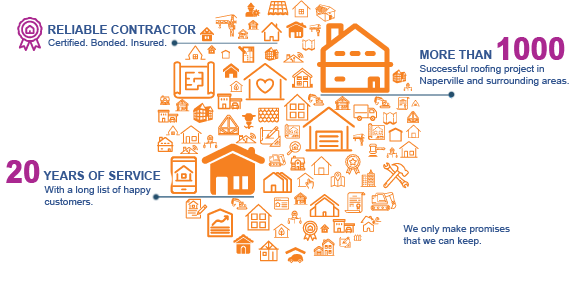
After two decades of assisting homeowners with all types of home improvement work, including roof replacement, we have developed the skills necessary to approximate the age of roofs of all types with a great degree of accuracy. We know the importance of aging a roof, but we’ll also help you with determining what areas of the roof need immediate attention, areas that might require some minor repairs and to give you an idea of when you could require a full replacement.
VIS Exterior is licensed, insured and certified. We pride ourselves on our years of experience working with DuPage County homeowners and the relationships we’ve established. Rather than taking chances, taking action now can save a lot of headaches later. Contact us at VIS Exterior and schedule a roof inspection.












